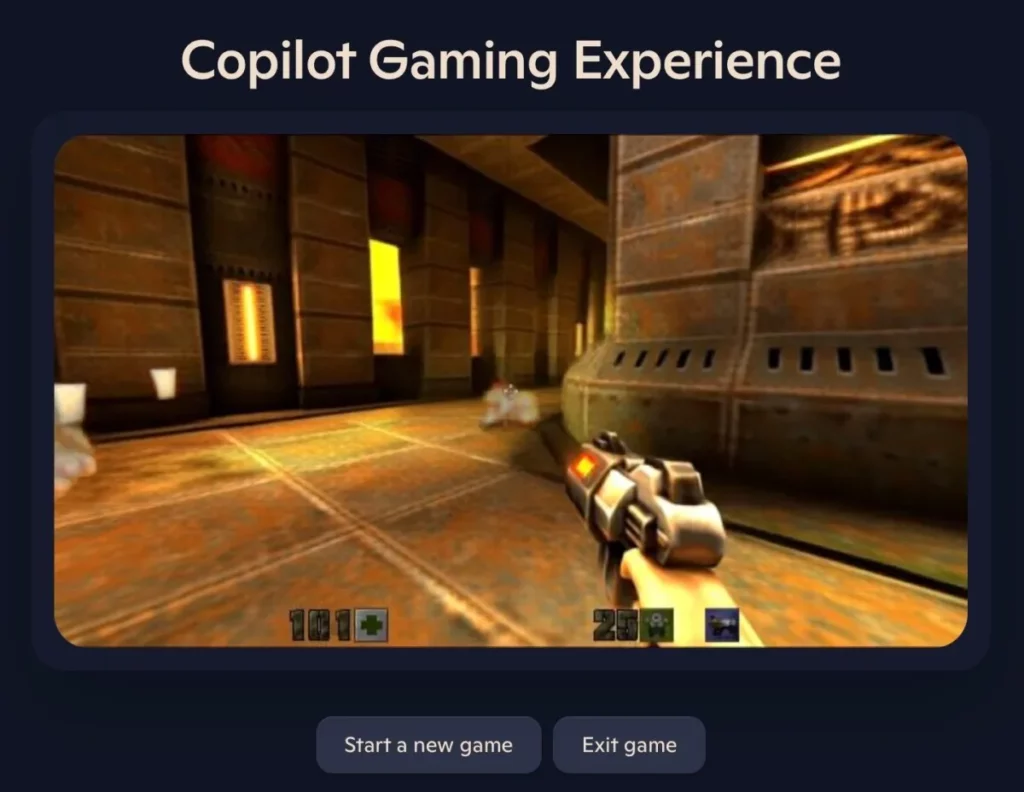
Microsoft has released a browser-based, playable level of the classic video game Quake II. This serves as a tech demo for the gaming capabilities of Microsoft’s Copilot AI platform – though by the company’s own admission, the experience isn’t quite the same as playing a well-made game.
Users can try it out for themselves, utilizing their keyboard to navigate a single level of Quake II for a couple minutes before hitting the time limit. In a blog post detailing their work, Microsoft researchers stated that their Muse family of AI models for video games enables users to “interact with the model through keyboard/controller actions and see the effects of your actions immediately, essentially allowing you to play inside the model.”
To showcase these capabilities, the researchers trained their model on a Quake II level (which Microsoft owns through its acquisition of ZeniMax). “Much to our initial delight we were able to play inside the world that the model was simulating,” they wrote. “We could wander around, move the camera, jump, crouch, shoot, and even blow-up barrels similar to the original game.”
At the same time, the researchers emphasized that this is meant to be “a research exploration” and should be viewed as “playing the model as opposed to playing the game.” Specifically, they acknowledged “shortcomings and limitations,” like the fact that enemies are fuzzy, damage and health counters can be inaccurate, and most strikingly, the model struggles with object permanence, forgetting about things that are out of view for 0.9 seconds or longer.
In their perspective, this can “also be a source of fun, whereby you can defeat or spawn enemies by looking at the floor for a second and then looking back up,” or even “teleport around the map by looking up at the sky and then back down.”
Game designer Austin Walker was less impressed by this approach, posting a gameplay video in which he spent most of his time trapped in a dark room.
Source: https://techcrunch.com/2025/04/06/microsoft-releases-ai-generated-quake-ii-demo-but-admits-limitations/

